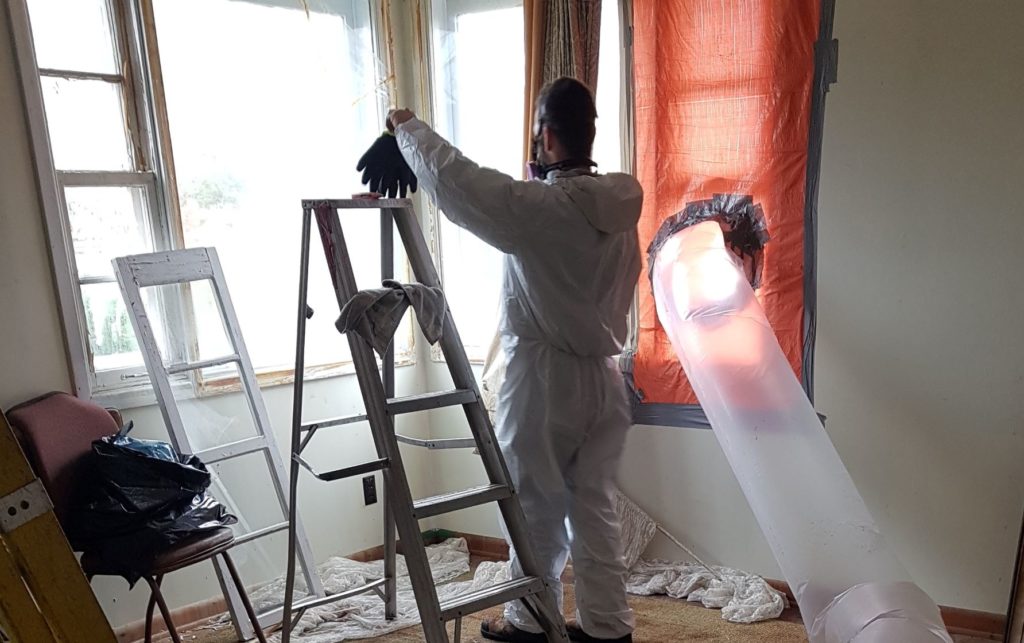Attic Mold | Causes, cost & Solutions
Why is there mold in the attic ?
Attics are a privileged place for the development of mold because they are dark, humid and benefit from excellent air circulation. During the production process, mold spores are released into the air and settle on surfaces with high humidity.
Additionally, attic insulation can become damp due to roof leaks or condensation from the attic air conditioning system that provides ventilation to the home.
The attic is one of the most difficult areas to clean because it can be hot, dark and confined.
When done properly, attic mold cleaning protects attic insulation from moisture damage.
Decontamination Services
- Bathroom Mold
- Mold on Windows
- Attic Mold
- Black Mold
- White Mold
- Yellow Mold
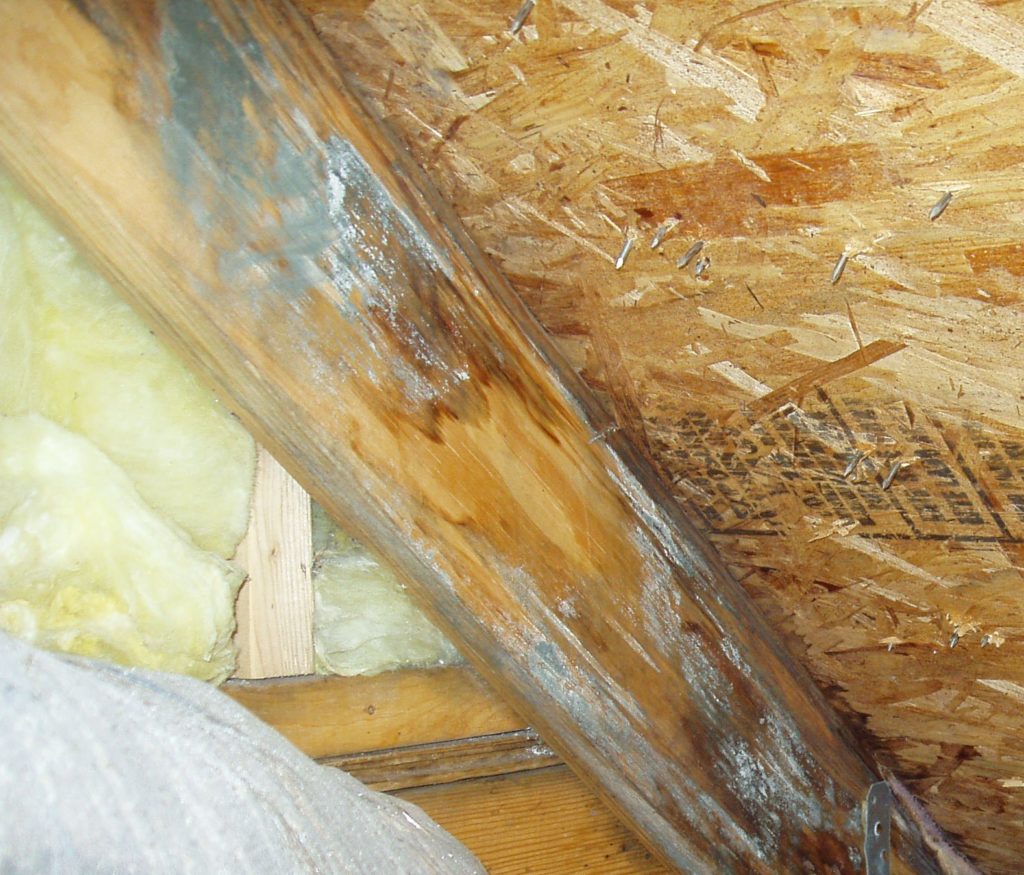
How to get rid of mold in the attic
The attic is a foreign feature in most homes because the attic is not a living space. Often, basements are also overlooked when it comes to mold prevention and home maintenance.
Many homeowners find out the hard way that their attic has become filled with toxic mold spores due to moisture buildup. In some cases, it is the result of water leaks in the attic.
However, mold in the attic is often caused by the condensation of moisture that has seeped into the floor of the attic of a house. This happens when houses are very close together or there are attic ventilation problems.
Mold can become dangerous if it begins to have direct contact with the floor of an attic. The attic is often isolated from the rest of the house, which means mold spores can grow undisturbed. This allows attic mold to spread faster, increasing the danger to anyone who has not taken proper precautions.
About mold in the attic
Mold spores love attics because they receive a lot of heat and humidity. If attic ventilation is a problem, mold has the perfect environment to spread quickly. Attic vents allow air to circulate throughout the attic. This helps prevent condensation which can lead to the development of mold in the attic.
If attic ventilation is an issue, homeowners should consider purchasing attic fans. Homeowners can also lower the attic temperature to prevent condensation from forming in the attic.
Mold problems in attics are often overlooked because the attic is not used as a living space. However, attics tend to accumulate dangerous toxins due to moisture buildup and ventilation issues.
Molds, like other fungi, thrive in moist conditions. When they propagate in the attic of a structure, they can quickly damage the structural elements (beams, frame, etc.) and endanger the entire building.
If the mold infestation spreads, it could compromise the air quality throughout your property. Mold spores that are tiny enough to go unnoticed can enter your ventilation system and contaminate your entire home, exposing everyone in the household to potentially dangerous mold.
The presence of mold in the attic can be detected by several signs.
If you notice any of the following symptoms, you most likely have a damp problem in your home, which means there is also a mold problem:
- Musty or earthy smell in the attic and the rest of your house.
- Condensation on windows, walls, and other structures in your attic, as well as inside your attic.
- Black spots or streaks on attic walls, wood surfaces, or other structures in your attic.
- Weakness of structural elements, in particular beams and structural elements.
Preventing mold in the attic is essentially a matter of attic ventilation. Make sure there are proper vents to allow fresh air into the attic. You can also prevent mold in the attic by keeping your attic dry. If moisture builds up in the attic, let it air out before it turns to condensation or mold spores.
Extremely high humidity can be a problem in attics that are not well ventilated during the warmer months. Molds grow if there is too much humidity for an extended period of time.
Common Symptoms of Attic Mold Infestation
The most common symptoms include discoloration of the attic. White, brown, or gray spots on attic ceilings and walls indicate the presence of mold in the attic.
Black colored mold indicates heavy contamination. The presence of more than one type of mold in your attic is another indication that you have a problem. Attic insulation can also be affected by moisture issues, causing it to rot or become moldy.
Mold can grow to the point of forming “fungus pockets” between the rafters of the structure. These pockets of mold are usually easy to spot because they look like beehives.
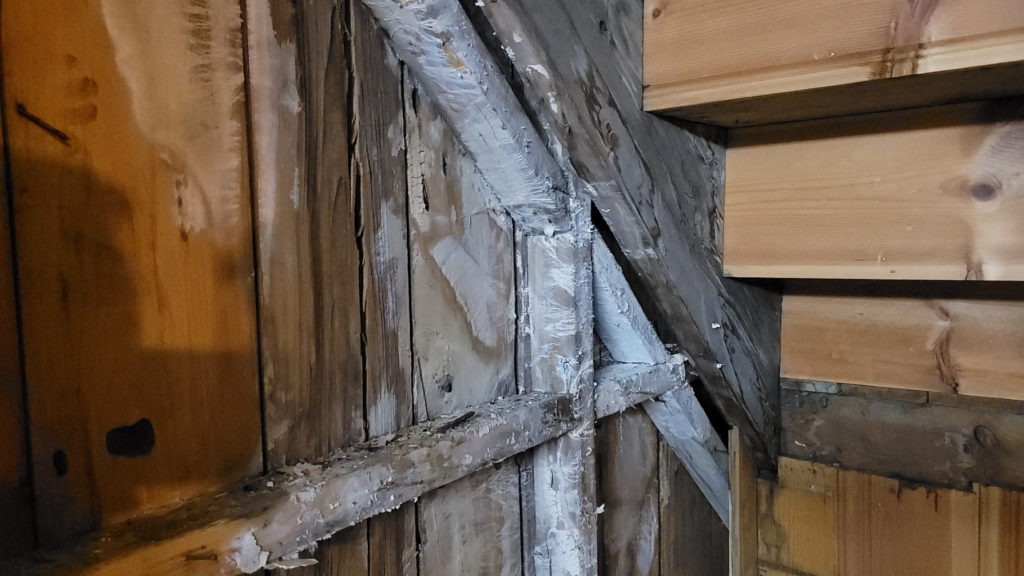
Mold contamination in the attic is especially dangerous because mold spores that contaminate your attic can seep into your ventilation system and air ducts, exposing mold toxins throughout your home.
Also, moldy insulation can lead to the development of mold in the house itself. In fact, mold spores from moldy attic insulation can spread to other parts of your living space through your heating and cooling systems. This means that mold you observe in your attic may indicate the presence of mold inside your walls.
The most likely places where mold can appear
Mold in the attic occurs when mold spores grow in an area with high humidity. Mold can grow on any damp area of your home if mold spores are allowed to multiply. Molds grow well in moist environments with high humidity and temperatures between 40 and 100 degrees Fahrenheit (F). It is important to note that mold can grow anywhere mold spores are able to enter the home, but mold growth is more common in areas where there is a high level of humidity.
Mold can also be found on various surfaces in your home, including carpets and walls. Remember that mold will continue to grow in damp areas that have been exposed to mold. Attic mold occurs when mold spores grow in high humidity areas of your home. They are most often found in ceiling joists, wall cavities and under roof trusses.
Attic mold: What are the types of mold that develop in the attic?
The types of mold that grow in attics are usually either Aspergillus penicilloides or Stachybotrys atra. Aspergillus penicilloides is not known to produce mycotoxins, so it’s the lesser of two evils. Stachybotrys atra produces a mycotoxin called “satratoxin”
Attic Mold: Is Attic Mold Dangerous?
Yes. Stachybotrys is toxic to humans, as well as animals and other types of life. In fact, he has been implicated in the deaths of many animals. It can cause allergic reactions and respiratory distress. Allergic reactions can be immediate or delayed for weeks or months in some people.
Attic mold: Can mold in the attic cause health problems?
Yes, mold in the attic can definitely cause health issues related to mycotoxins. Other attic molds are not known to produce mycotoxins, but they are still dangerous because inhaling attic mold spores leads to health problems and attic molds can cause structural damage and to the contents of a building.
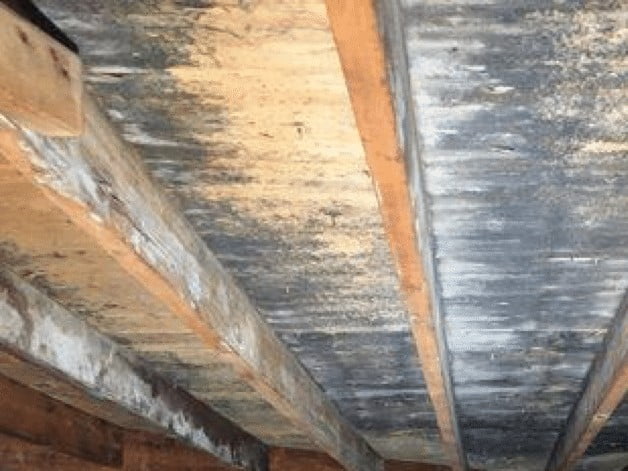
Attic mold Black mold
By black mold we generally mean a type of toxic mold. Prolonged exposure to black mold can lead to respiratory problems, eye irritations and different other complications. Particularly fond of damp places. It often manifests itself in the bathroom, kitchen and even in the bedroom. The presence of mold can be caused by various factors, such as water infiltration, condensation or a leak.
White mold attic
Thrives in a humid environment. Many homeowners won’t even realize they have a white mold problem because of its color, which makes it difficult to detect. It can grow on plants, fabrics, food, and many other organic materials like drywall, wood, and carpets.
Black mold in the attic
Black mold thrives in moisture, and the more water the better. It is especially prevalent in basements (due to water damage), but can also be found in attics.
In addition to these factors. Condensation can be the source of black mold in an attic. Warm air from the rest of the house can rise to the attic during the winter and condense on wood surfaces.
However, not all black mold in your attic is necessarily dark. Various factors and conditions can give a black tone to materials, especially wood. So if you think you’re dealing with black mold in your attic, it’s a good idea to call a professional.
White mold in the attic
White attic mold is usually thicker than black attic mold. Its texture is also powdery. It is most often found on damp surfaces or objects vulnerable to moisture damage.
White mold in the attic can easily spread throughout the attic if you don’t deal with it quickly.
As with many other species, exposure to white mold should be avoided, especially over the long term. Therefore, if you know that you have white mold growing in your attic, you should take it in hand immediately, in order to identify the cause and eliminate it permanently.
What would happen if the mold in your attic was not eliminated?
Molds are part of nature, but those that grow in a home are never good. Not only does mold spread quickly and cause structural damage to homes, but it can also be dangerous to human health. Symptoms may include breathing difficulties, shortness of breath, respiratory system problems, chronic fatigue syndrome, or headaches. When mold is allowed to grow unchecked, mold spores will be released into the air and breathed in by people occupying the home.
If mold is not removed from your attic, mold spores can also contaminate other parts of the house. If mold is found on surfaces that rest on the attic floor, such as wood moldings or drywall, it may spread to the following places:
- Floors outside the house
- Floors inside the house
- Ceilings inside the house
- Basements
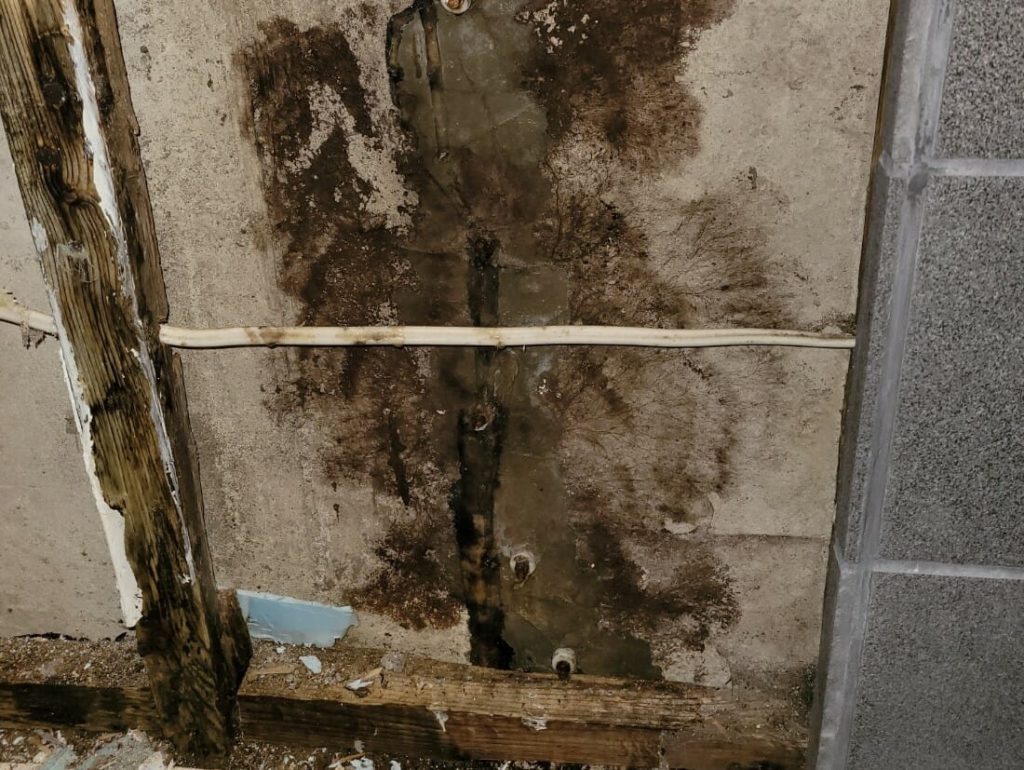
Mold can also spread through your ductwork, causing mold spores to blow into other parts of your home. This is especially dangerous for people with allergies or respiratory problems. For homes with increased mold growth in different areas, it may be necessary to microscopically inspect and test for the presence of mold spores in areas such as:
- Bathrooms
- Kitchens
- Toilet
Mold can also cause bad odors that affect the overall smell of your attic. If you suspect there is an odor problem, it is important to eliminate it as soon as possible.
Mold decontamination in the attic
Attic decontamination is extremely important for maintaining the structural integrity of your home. Most mold does not grow on the surface of drywall, but mold spores can enter the attic through air vents or other means and then begin to take root behind the walls.
If mold begins to grow beyond a few spots in one spot, you need treatment to stop the mold from spreading and prevent rot.
The attic houses the attic mold remediation as well as ventilation and insulation work. These three important factors should be considered when planning attic restoration or reconstruction after mold remediation. You need to consider these three factors before your attic decontamination project begins, so you can complete the job with minimal disruption and mold growth in the future.
Attic Mold Remediation
Attic mold remediation or any mold infestation requires the intervention of a mold remediation professional to treat the mold and prevent it from growing. Once mold has reached most of your home, you can no longer control its growth as it has spread beyond your walls and thrives in your insulation and ventilation systems. You cannot remove mold from these systems.
What's the best way to get rid of mold in the attic ?
Unfortunately, you have very few alternatives when it comes to removing mold from your attic. This is a difficult task that requires the expertise of a professional in the field (IICRC S520).
The complete mold removal procedure will also be determined by a variety of factors, such as the size and configuration of your attic, as well as the extent of contamination. First, mold remediation begins with a mold test. This test will determine the extent of mold contamination in your attic. Mold testing is done by taking samples from different places in the attic and sending them to a lab for mold analysis.
During this process, it is important to keep all windows closed and to turn off the heating or air conditioning, as mold can spread quickly. Mold spores are very small and float easily in the air.
Procedures for decontaminating an attic
Treating an attic against mold is a complex procedure that can be divided into several phases:
- Locate the sources of moisture and the extent of the problem.
- Reduce or eliminate all sources of moisture.
- Caulk the area to make sure it is completely sealed.
- Carefully remove and dispose of any mold-contaminated materials (including insulation).
- Use a high-efficiency particulate (HEPA) vacuum to clean the space.
- Treat with an ozone generator (if necessary)
During such work, it is also essential to wear protective equipment and respiratory masks, not only to avoid exposure to mold, but also to avoid coming into contact with asbestos, which is still very widespread in attic insulation.

Attic mold decontamination price
The price of attic mold removal depends on several factors. Every attic is built differently, the size of the attic and the amount of mold present in it are some of the important aspects to keep in mind before removing mold from the attic.
It is necessary to thoroughly assess the molds before proceeding with their removal. While it’s helpful to know the cost of mold removal in an attic, having an attic inspection done is highly recommended so you know exactly what you’re investing in.
Contact the Gestion Xpress Demolition team today for a quick and free estimate for your decontamination projects.
In conclusion, how to prevent mold in the Attic ?
You can prevent mold by maintaining a clean, dry environment. This will include eliminating water infiltration if it enters your attic. You can also add insulation to prevent heat loss, limit humidity levels in the house and evacuate moisture from bathrooms.
Another way to prevent mold is to have good ventilation in the attic. A well-ventilated attic will prevent the development of mold due to excess humidity. To prevent mold from condensation, you can also improve the humidity control in your home. You can also prevent mold by having a mold resistant coating installed in your attic. You can find mold resistant coatings that suit your needs and budget.
In conclusion, mold is a serious problem that requires immediate attention and careful monitoring. If there are visible signs of mold, you should contact a mold remediation professional immediately.
